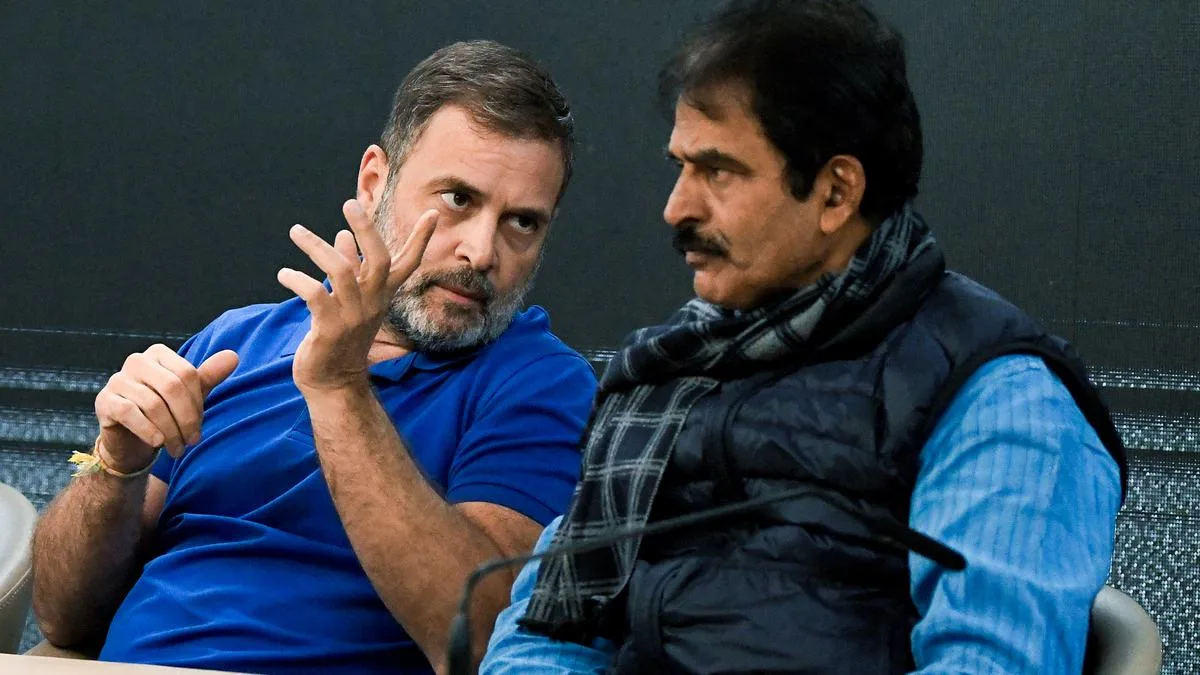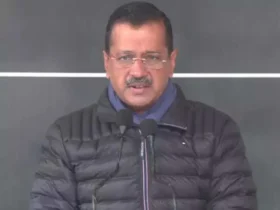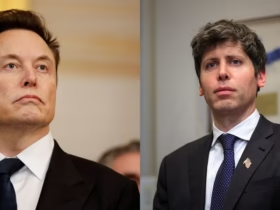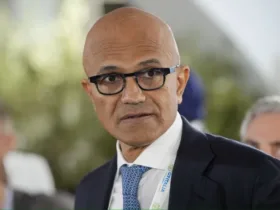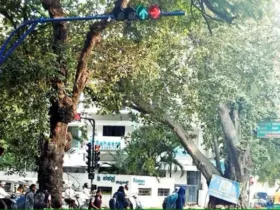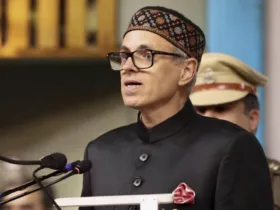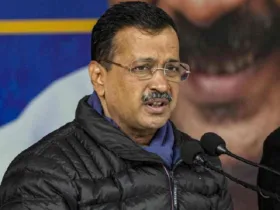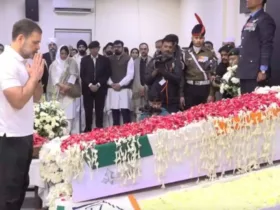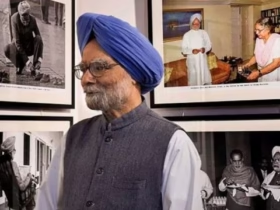The political arena in India has once again been ignited with controversy, this time revolving around an FIR filed against Congress leader Rahul Gandhi. The FIR has been widely described by the Congress party as a “diversionary tactic” orchestrated by the ruling BJP government to deflect attention from Gandhi’s protest against Home Minister Amit Shah. This incident adds another layer to the ongoing tensions between the Congress and BJP as accusations and counter-accusations escalate.
Background of the Controversy
The dispute began during a heated protest staged by the Congress party against recent remarks made by Home Minister Amit Shah. Rahul Gandhi, a key figure in the Congress-led protests, strongly opposed Shah’s comments and took a stand to defend the legacy of Dr. B.R. Ambedkar. The protest was part of a broader opposition campaign aimed at holding the government accountable on several issues, including caste representation, governance, and social justice.
However, the situation escalated when a physical altercation reportedly broke out in Parliament, during which members of both the Congress and BJP filed complaints against each other. Amid the chaotic exchanges, BJP MP Phangnon Konyak accused Rahul Gandhi of acting aggressively and shouting during the confrontation. Gandhi and the Congress party, on the other hand, alleged that the BJP was attempting to intimidate the opposition and divert public attention from critical issues.
Congress’s Reaction to the FIR against Rahul Gandhi
The Congress party has vocally condemned the FIR filed against Rahul Gandhi, calling it a blatant attempt to stifle dissent. Congress General Secretary K.C. Venugopal described the FIR as a “badge of honour” for Gandhi, emphasizing that such actions would not deter the opposition from continuing its fight against the “casteist RSS-BJP regime.” Venugopal also pointed out the irony of the FIR, noting that Gandhi already faces 26 legal cases across various jurisdictions, further highlighting the alleged misuse of legal mechanisms by the government.
Congress leaders also raised questions about the lack of action on complaints filed by female Congress MPs, who accused BJP leaders of physical assault during the same altercation. According to Venugopal, the FIR against Gandhi and the inaction on complaints filed by Congress MPs underscore the partisan nature of the government’s approach to law enforcement.
The Incident in Parliament
The FIR was filed following a scuffle that occurred in Parliament during protests by both the opposition and the ruling BJP-led NDA. Congress MPs were staging demonstrations against the BJP government’s policies, while BJP members also launched counter-protests. Amid the heated exchanges, a confrontation reportedly took place, leading to allegations of misconduct from both sides.
Senior Congress leader Mallikarjun Kharge alleged that he was pushed during the scuffle, while BJP members claimed that two of their MPs sustained injuries in the altercation. BJP MP Phangnon Konyak accused Rahul Gandhi of making her feel “uncomfortable” by shouting and being in close proximity during the incident. In response, Gandhi and other Congress leaders have dismissed these allegations as baseless and politically motivated.
Legal Implications of the FIR against Rahul Gandhi
The FIR against Rahul Gandhi includes charges under sections of the Indian Penal Code (IPC) related to causing grievous hurt and criminal intimidation. Initially, the BJP’s complaint also included charges of attempted murder, but these were not included in the final FIR registered by Delhi Police.
Congress leaders have criticized the police for acting on the BJP’s complaint while allegedly ignoring complaints filed by Congress MPs. This selective approach, they argue, reflects the government’s intention to use legal avenues as tools for political vendetta.
The Delhi Police has confirmed that it is investigating both complaints – one from the BJP and the other from Congress – but the FIR against Gandhi has drawn the most attention due to his high-profile status and the political context surrounding the case.
Accusations of Diversionary Tactics
Congress leaders have strongly argued that the FIR is a deliberate diversionary tactic by the BJP to shift public attention away from pressing issues. According to the Congress, the BJP is attempting to discredit Gandhi and the opposition by framing them as aggressors in the parliamentary incident.
Venugopal stated that such legal actions will not intimidate Gandhi or the Congress party, adding that they will continue to oppose the government’s policies and actions, particularly those they believe undermine social justice and democratic principles.
BJP’s Perspective on the Incident
On the other hand, BJP leaders have defended the FIR against Gandhi, arguing that his behavior during the altercation was inappropriate and warranted legal action. BJP MPs have accused the Congress of using protests as a means to create chaos and disrupt parliamentary proceedings.
BJP MP Phangnon Konyak, who filed a complaint against Gandhi, claimed that his actions were intimidating and crossed the line of acceptable behavior in Parliament. The BJP has also used the incident to portray the Congress as an unruly opposition, unwilling to engage in constructive dialogue.
Impact on the Political Landscape
The FIR against Rahul Gandhi comes at a time when the Congress party has been intensifying its opposition to the BJP-led government. From protests over caste representation to questions about governance, the Congress has been vocal in its criticism of the ruling party. The FIR has added a new dimension to this rivalry, further polarizing the political landscape.
For the Congress, the FIR serves as a rallying point to galvanize support among its base, particularly among those who view the BJP’s actions as authoritarian. On the other hand, the BJP is using the incident to reinforce its narrative of the Congress being disruptive and combative.
Public Perception and Media Coverage
The incident has garnered significant media attention, with coverage focusing on the allegations, counter-allegations, and the broader political implications. Public opinion on the matter is divided, with supporters of both parties taking to social media to express their views.
For many, the FIR against Rahul Gandhi is seen as emblematic of the increasing use of legal mechanisms for political purposes. Others, however, view it as a necessary step to hold political leaders accountable for their actions, regardless of their stature.
Historical Context: Legal Cases Against Rahul Gandhi
The FIR is not the first legal challenge faced by Rahul Gandhi. Over the years, he has been involved in several legal battles, often linked to his outspoken criticism of the BJP and its allies. From defamation cases to allegations of violating election codes, Gandhi’s legal troubles have often coincided with periods of heightened political activity.
For the Congress, these legal cases are viewed as part of a broader strategy by the BJP to silence dissent and weaken the opposition. The party has consistently framed Gandhi’s legal battles as a badge of honour, symbolizing his commitment to challenging the ruling establishment.
Conclusion
The FIR against Rahul Gandhi marks yet another flashpoint in the ongoing political rivalry between the Congress and BJP. While the BJP has justified the FIR as a response to Gandhi’s alleged misconduct, the Congress has dismissed it as a diversionary tactic aimed at deflecting attention from the government’s failures.
As the investigation unfolds, the incident is likely to have far-reaching implications for both parties. For Rahul Gandhi, it represents another chapter in his long-standing battle against the BJP. For the Congress, it serves as an opportunity to highlight what they perceive as the government’s misuse of power.
In the larger context, the FIR underscores the growing polarization in Indian politics, where legal actions and parliamentary confrontations have become tools in the battle for public perception and political dominance. As the story continues to develop, it remains to be seen how it will shape the trajectory of Indian politics in the months to come.

